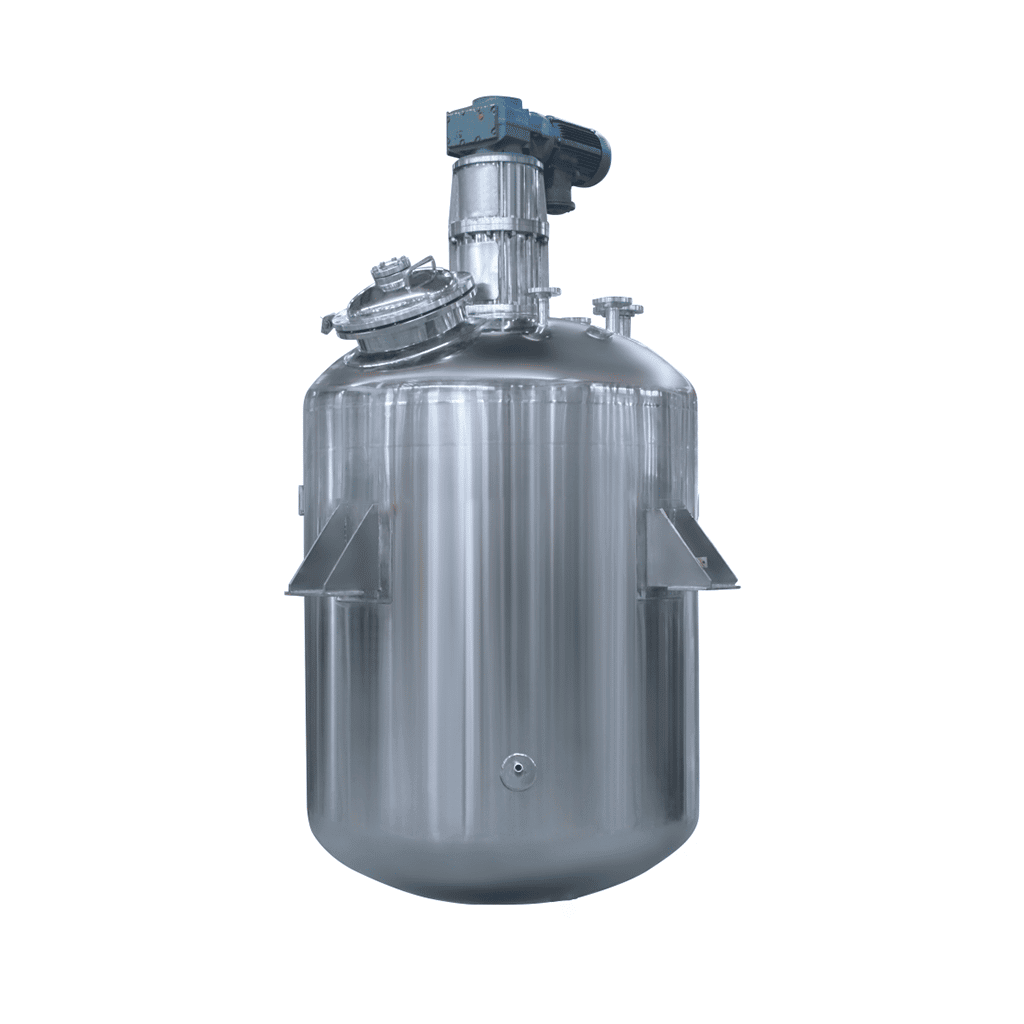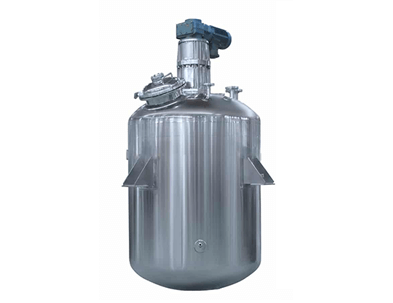
-24-1.jpg)
Stainless Steel Reactor
Stainless Steel Reactor: used in dairy products, sugar, beverages, and other fields
Material
stainless steel (316, 304)
Capacity (L)
10-10000+
Mixing system
anchor, paddle, frame and others
Heating system
electric heating, oil heating and others
A stainless steel reactor is a stainless steel container equipment. The stainless steel reactor consists of a kettle body, a kettle lid, a stirrer, a jacket, a bracket, a transmission device, a shaft seal device, etc. Materials and openings can be made according to user needs and process requirements. Stainless steel reactors are mainly used for stirring, homogenizing, and mixing storage of dairy products, sugar, beverages, food, and various pharmaceuticals.
Request a quoteThe stainless steel reactor not only has the ability to resist atmospheric oxidation, that is, the ability to prevent rust, but also has the ability to resist corrosion in media containing acids, alkalis, and salts, that is, corrosion resistance. The stainless steel reactor body relies on the formation of a very thin, strong, dense, and stable chromium-rich oxide film (protective film) on its surface to prevent oxygen atoms from continuing to penetrate and oxidize, thereby obtaining corrosion resistance. Its corrosion resistance varies with the chemical composition of the stainless steel reactor, mutual addition state, use conditions, and environmental medium type.

Precautions for stainless steel reactor
Stainless steel reactors have excellent corrosion resistance in clean and dry environments. But in coastal areas, there is a lot of salt in seawater fog, and it will rust quickly. Therefore, no stainless steel is corrosion resistant and will not rust in any environment. Once the protective film is continuously damaged for some reason, oxygen atoms in the air or liquid will continue to penetrate, and the iron atoms in the metal will continue to separate, forming loose iron oxide, and the metal surface will rust.
The stainless steel reactor has a customized stirring device. The stirring shaft adopts a pressure resistant sanitary mechanical seal device to maintain the working pressure in the tank and prevent unnecessary pollution and material loss caused by the leakage of materials in the tank. Stainless steel reactor design and structure Stainless steel reactors can be divided into frame type, paddle type, turbine type, scraper type, and combined type. The rotating mechanism can adopt a cycloidal pinwheel reducer, which can meet the special reaction requirements of various materials. For the continuously variable speed reducer, the sealing device can use mechanical seals, and the heating and cooling can use jackets, half pipes, coils, and other structures. Heating methods include steam, electric heating, and thermal oil to meet the process needs of different working environments such as acid resistance, high-temperature resistance, wear resistance, and corrosion resistance.
Stainless steel reactors usually use high quality stainless steel materials such as 316L, 2205, and 2057 that comply with GMP standards. The stainless steel reactor is mainly composed of three parts: the tank, the jacket, and the stirring system. The stirring forms are mostly frame stirring, and the sealing uses sanitary mechanical seals. The interface adopts ISO standard quick release clamp type, the inner surface is mirror polished, and the outer surface is treated with sandblasting, frosting, cold rolling, and primary color matte. Stainless steel reactors are widely used in the chemical industry, rubber, pesticides, medicine, and other fields.
Stainless steel reactor body
1.The surface of the stainless steel reactor kettle body contains dust from other metal elements or attachments of foreign metal particles. In humid air, condensation between the attachment and the stainless steel connects the two into a miniature battery, triggering an electrochemical reaction and destroying the protective film, which is called electrochemical corrosion.
2.Organic juice adheres to the surface of the stainless steel reactor kettle body and forms organic acids in the presence of water and oxygen. These organic acids will corrode the metal surface for a long time.
3.Substances containing acids, alkalis, and salts adhere to the surface of the stainless steel reactor kettle body (such as alkaline water and lime water splashed on the decorative wall), causing local corrosion.
4.In polluted air (for example, the atmosphere contains a large amount of sulfides, carbon oxides, and nitrogen oxides), sulfuric acid, nitric acid, and acetic acid liquid spots will be formed when encountering condensed water, causing chemical corrosion.
Methods to prevent rust in stainless steel reactors
1.The surface of the stainless steel reactor must be cleaned and scrubbed frequently to remove attachments and eliminate external factors that cause modification.
2.316 stainless steel reactor is suitable for use in coastal areas and can resist seawater corrosion.
3.The chemical composition of some stainless steel pipes does not meet the corresponding standards and does not meet the requirements of 304 materials. Therefore, it will also cause the stainless steel reactor to rust, which requires careful selection to ensure the quality and safety of the stainless steel reactor.
The stainless steel reactor kettle has the characteristics of rapid heating, high temperature resistance, corrosion resistance, hygiene, no need for automatic boiler heating, and easy use. Widely used in petroleum, chemical industry, rubber, pesticides, dyes, medicine, and food. Used to complete vulcanization, nitration, hydrogenation, hydrocarbonization, polymerization, condensation, and other processes. It is based on the complete mixing of the reaction materials. For physical change processes such as heating, cooling, liquid extraction, and gas absorption, a stirring device is required to obtain good results.




